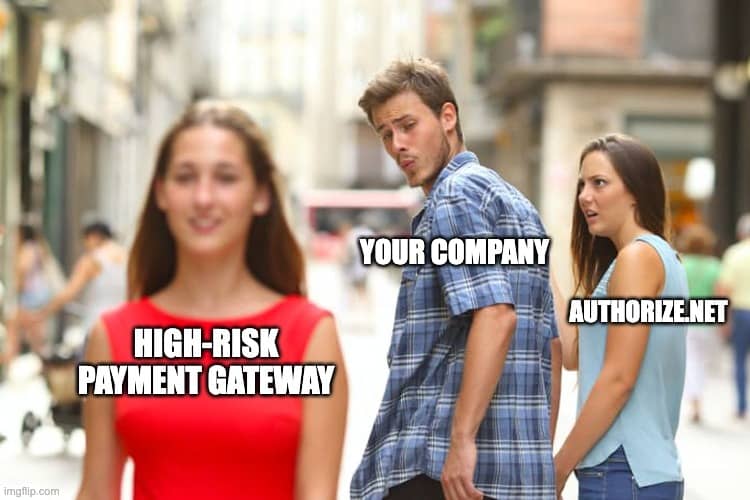What's ACH EOD Processing?

If you’ve ever seen credit card processing terms such as “ACH” and “EOD,” you may have wondered, “What does ACH EOD processing mean?” and even been curious about how it relates to your merchant account. Likewise, you may have heard a financial advisor or accountant refer to ACH EOD, meaning that this is a convenient payment processing option you can choose for your business.
What exactly does ACH EOD processing mean? This post will explain precisely what ACH and EOD mean, how they affect online banking and other financial transactions, and how an ACH EOD bill payment system can provide a viable payment option for your customers.
What does ACH EOD processing mean?
Let’s begin by demystifying these initials. “ACH” stands for the Automated Clearing House Network, while EOD simply means “end of day,” which means the end of the business day in business jargon. Essentially, ACH is a nationwide electronic funds transfer and processing system, while EOD refers to the time it takes for processing, as we’ll discuss below. Now that we understand the lingo, it’s time to talk about ACH EOD meanings as they relate to your business and how Zenti can help you use ACH EOD processing to benefit your merchant transactions.
What is ACH EOD processing?
There are lots of different ways to move money. You can write a paper check or money order or use a credit or debit card. Another way to move money is by transferring it between accounts electronically. In the U.S., most electronic financial transactions are processed through the Automated Clearing House (ACH) Network, an electronic payment service operated by the National Automated Clearinghouse Association (Nacha).
Just to give you an idea of their scope of operations, according to Nacha, in the U.S. alone, the ACH Network processed 29.1 billion payments in 2021. And of these payments, 608.8 million transactions, totaling 943.7 billion USD, were made as same-day (or EOD) transactions. These numbers illustrate how many payment processing transactions involve ACH EOD, meaning that the ACH payment was completed by the end of the day.
When looking at “what does ACH EOD processing mean,” the key point is to understand that the payment is processed through the ACH Network, a computer-based electronic system created for processing funds from one financial institution to another. Even if you’ve never heard of ACH payment processing, chances are you’ve used it in various ways over the years.
For example, if you get your paycheck or pay your bills through direct deposit via your bank account, you’re using ACH transactions through the ACH Network. Additionally, you might use ACH payments when you deposit money into certain savings accounts, such as an individual retirement account (IRA) or a college savings account. And interestingly, on a national scale, the Federal Reserve System acts as the nation’s largest ACH operator, using ACH government-to-consumer (G2C) transfers in transactions such as Social Security payments, IRS tax refunds, food stamps, employee pay, annuities, and mortgage payments.
In commercial usage, business owners and merchants can use ACH transfers when receiving payments from customers or ACH transfers to pay vendors. Toward that end, ACH transfers are widely used in business-to-consumer (B2C) transactions.
One of the nation’s leading providers for high-risk merchant payment processing, Zenti can help you get low-cost, end-of-day ACH payment services to streamline your business and make payments easier. We can help you apply for a full roster of ACH network services, so you’ll never have to worry about lost checks and payment lags again.
How are ACH payments used in business transactions?
Here are the most common ways that ACH payments are used:
- Customers are paying for goods or services.
- Businesses are paying suppliers.
- Consumers transfer funds to different banks or financial institutions.
- Employers send money to employees’ accounts.
- Government deposits and withdrawals for mortgages, Social Security payments, IRS tax refunds, annuities, loans, and food stamps.
How do ACH payments work?
The Automated Clearing House Network electronically transfers funds from one bank account or financial institution to another in an ACH payment. This electronic system eliminates the need for wire transfers, paper checks, credit cards, debit cards, and cash. ACH payments can be received and sent by both individuals and businesses, making them versatile enough to provide a wide range of payment solutions for merchants and consumers.
There are two types of ACH payments: ACH credit and ACH debit. The best way to explain the differences between the two types is to use a “push vs. pull” analogy.
ACH credit payments
In an ACH credit transaction, you initiate the payment, and the ACH system sends the requested funds electronically from your designated bank account.
You might already be using an ACH payment system if you’ve set up automatic bill pay for one of your accounts, such as your rent or mortgage. It’s an extremely user-friendly payment method because you don’t have to manually transfer the funds. You just push the funds from your account, and the ACH processor takes care of your payment. As long as you and your recipient agree to the transaction and schedule, it’s all done automatically, typically on a monthly basis.
ACH debit payments
In an ACH debit transaction, you authorize someone to pull your money from one account and transfer it to another. You give the merchant or service provider permission to take funds from your account when a payment is due. One example of this would be your utility payments, where you authorize the electric company to take funds from your bank account through ACH every month. This is something that you would set up ahead of time with the utility company, giving them your bank account information so they can withdraw the funds. The ACH processor manages the process, receiving the payment instructions from the bank and processing them accordingly.
As an expert in high-risk merchant processing services, Zenti can help you apply for ACH network services to streamline your operations. Additionally, if you’re interested in credit card services, Zenti can help you successfully apply for high-risk credit card processing, even if other payment processors have turned you.
ACH EOD meaning: How long does ACH processing take?
Now it’s time to talk about the EOD part of the equation. When clarifying ACH EOD meaning, it’s important to know that EOD refers to the time it takes to process the payment. As you already know, with many types of transactions, the payment isn’t processed until the next day or even the day after. Unfortunately, this time lag can play havoc with your bank account, especially regarding checking account or ATM withdrawals or debit transactions. Before you know it, you’ve got an overdrawn account or a bounced check because the dreaded payment processing lag can make it next to impossible to track payments accurately.
What are RDFI and ODFI?
Here’s something else you should know: If you’ve ever used a routing number or any bank account information to make a payment, then you’ve already used an ACH. That’s because banks and credit unions act as two different types of ACH processors:
RDFI
A receiving depository financial institution (RDFI) is a bank or a credit union agreeing to receive entries from an ACH processor. This means that the financial institution is recognized as an RDFI by Nacha and, therefore, qualified to receive ACH transactions.
ODFI
An originating depository financial institution (ODFI) is a bank or credit union qualified to create original entries for a payment. This means they’re “originators” and can obtain authorization for a credit or debit entry.
What does ACH processing mean for your bank account?
If you’ve noticed ACH activity on your bank statement and you don’t have an ACH account, here’s what you need to know:
Why did I get an ACH transaction?
If you notice an ACH transaction listed on your bank statement, there’s been an electronic transfer of funds to or from your bank account. This could be for various payments (such as a mortgage, Social Security, paycheck, etc.).
What should I do if I have an ACH transaction?
You don’t need to do anything if you notice an ACH transaction on your bank statement. Just be aware that this is a normal part of everyday banking and that you’ve probably already had countless ACH transactions to and from your bank account over the years.
Why was my ACH transaction denied?
Whenever an ACH payment is declined, it’s typically for the same reasons why any type of payment, such as a credit card or checking account, might be declined: insufficient funds. The ACH system is set up to automatically reject a payment if there aren’t enough funds in the account to cover the amount.
Another reason for rejection could be a mistake in the account information, such as an incorrect routing number. In this case, the account holder or payment originator can resubmit the correct account number and get approved right away.
If you’re having problems getting payments processed, visit Zenti and learn about our full roster of payment processing solutions for high-risk merchant accounts.
How can ACH EOD payment processing benefit your business?
What does ACH EOD payment processing mean for your business? Plenty, if you like getting fast payments with low processing fees. Here’s a look at the benefits of ACH EOD payment processing services:
Speed of payment
If you’ve ever talked to a financial advisor, they may have mentioned ACH EOD, which means that it is a way to process payments more quickly for your business. For merchants, one of the greatest benefits of ACH payments is that they’re transacted through real-time banking. This means that your bills will be paid automatically, with no payment lags or delays. The process will usually be completed by the end of the business day because electronic payments are quicker and more reliable.
With ACH payments, there aren’t any checks being sent back and forth, and there’s no risk of checks being bounced or accounts overdrawn due to payment lag. Zenti can set you up with a convenient ACH account with real-time online banking, so you’ll get your payments faster, often on the same day.
Low cost
ACH transfer processing is less expensive than credit or debit card processing, so you can save money on every transaction. With Zenti, you’ll be able to take advantage of these low-cost ACH services.
Remote transactions
With ACH transfer, you can send or receive payments without worrying about credit cards, debit cards, or paper checks.
Safety
ACH transfers are made securely through the ACH Network, which is operated by Nacha and monitored by the Federal Reserve, so you don’t have to worry about hacks or security breaches on your account. Every transaction is made according to Nacha rules and regulations, so you can be confident that your payments will go through safely. Plus, ACH transactions eliminate the need for paper money or credit cards, so you won’t have to send checks through the mail or courier services, where they might get lost.
Customer satisfaction
A satisfied customer is a customer who will come back. With ACH EOD payments, your customers don’t have to bother with writing checks and mailing them before the payment cut-off time. Additionally, your customers will be satisfied with seeing their payments processed immediately, with no waiting time or lags that can result in overdrawn accounts.
Here’s “What does ACH EOD payment processing mean for my business?” at a glance:
- Quicker
- More secure
- Less expensive
- Payments can be sent remotely.
- Customer satisfaction
Zenti can help you get approval for ACH EOD payment processing, so you’ll be able to send and receive payments from anywhere in the world, plus send them more quickly and securely, at a lower processing cost.
How you can accept ACH payments
Now that you’ve asked, “What does ACH EOD payment processing mean?” and you’re ready to try it, Zenti can help. We can set you up with the ACH payment network so you’ll be able to send and receive money quickly, often on the same day, through ACH’s safe and secure electronic system. To get started with convenient ACH payments, visit our page and fill out an ACH application, and one of our expert representatives will get in touch with you as soon as possible. And be sure to check out Zenti’s other payment processing services, where we provide a wide range of solutions for all types of high-risk merchant accounts.
Read Next

Find out whether Authorize.Net works for high risk merchants, what restrictions you might face and how to get approved.

Get expert advice on selling CBD products on Shopify, including compliance tips and setting up secure payment options.

Find out why Square may deactivate merchant accounts and steps to resolve issues and maintain uninterrupted payment services.
Need a High-Risk Merchant Account?
Disruption-free payment processing at the best price for your situation, guaranteed.
Get Free Guidance Now!